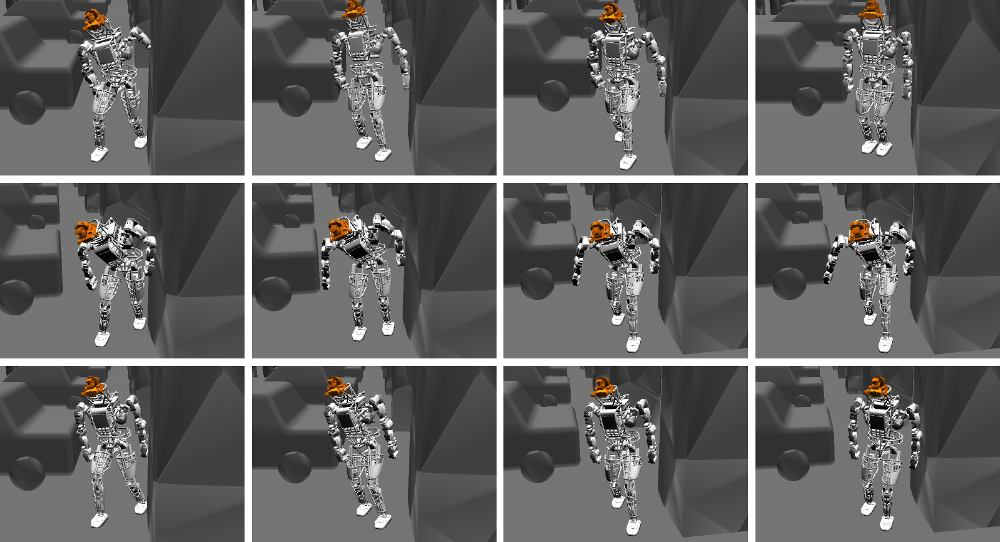SGD for robot motion? The effectiveness of stochastic optimization on a new benchmark for biped locomotion tasks
Trajectory optimization and posture generation are hard problems in robot locomotion, which can be non-convex and have multiple local optima. Progress on these problems is further hindered by a lack of open benchmarks, since comparisons of different solutions are difficult to make. In this paper we introduce a new benchmark for trajectory optimization and posture generation of legged robots, using a pre-defined scenario, robot and constraints, as well as evaluation criteria. We evaluate state-of-the-art trajectory optimization algorithms based on sequential quadratic programming (SQP) on the benchmark, as well as new stochastic and incremental optimization methods borrowed from the large-scale machine learning literature. Interestingly we show that some of these stochastic and incremental methods, which are based on stochastic gradient descent (SGD), achieve higher success rates than SQP on tough initializations. Inspired by this observation we also propose a new incremental variant of SQP which updates only a random subset of the costs and constraints at each iteration. The algorithm is the best performing in both success rate and convergence speed, improving over SQP by up to 30% in both criteria. The benchmark's resources and a solution evaluation script are made openly available.
PDF Abstract
